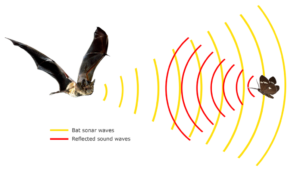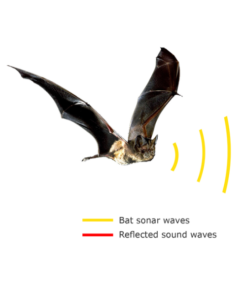
What Is Echolocation?
Echolocation is a biological process where bats emit high-frequency sound waves through their mouth or nose. These ultrasonic pulses travel through the air, bounce off objects, and return as echoes. By interpreting these echoes, bats can determine the size, shape, distance, and even texture of objects around them, including prey .
Precision in the Dark
Bats’ echolocation is finely tuned for hunting. They can detect tiny insects mid-flight, even in complete darkness. Some species, like the neotropical common big-eared bat (Micronycteris microtis), can even detect silent and motionless prey using only echolocation, forming precise acoustic images based on multiple characteristics like shape and surface structure
Adaptive Hunting Strategies
During hunting, bats adjust their echolocation calls. As they approach prey, they increase the rate of calls, producing a rapid series known as a “feeding buzz,” which helps them pinpoint the exact location of their target . This adaptability allows bats to track and capture prey with remarkable efficiency.
Navigating Complex Environments
In environments with many obstacles or other bats, echolocation can become challenging due to overlapping calls. However, bats have developed strategies to mitigate this. For instance, they can adjust the direction and frequency of their calls to focus on specific targets, effectively filtering out background noise and avoiding collisions .
Conclusion
Bats’ ability to hunt without sight is a testament to the power of echolocation. Through emitting and interpreting ultrasonic sounds, they navigate and forage with precision in the dark. This remarkable adaptation not only underscores the complexity of their sensory systems but also highlights the evolutionary ingenuity of these nocturnal creatures
